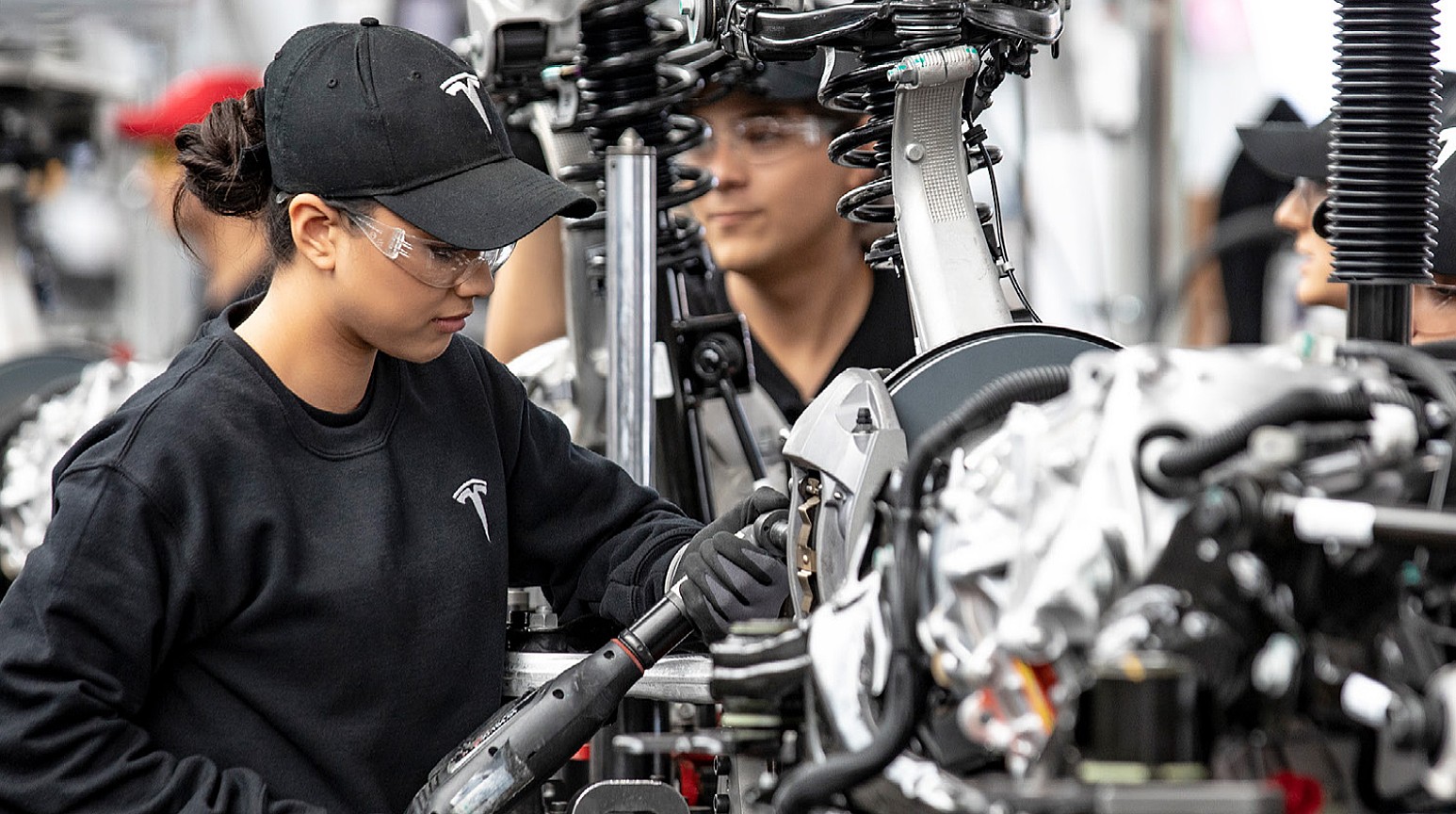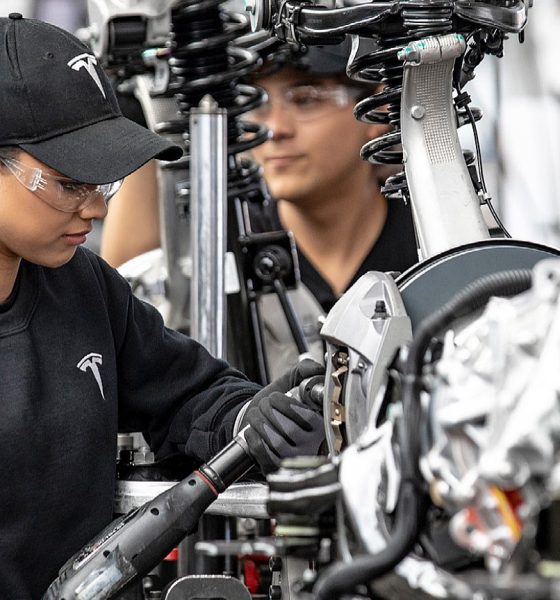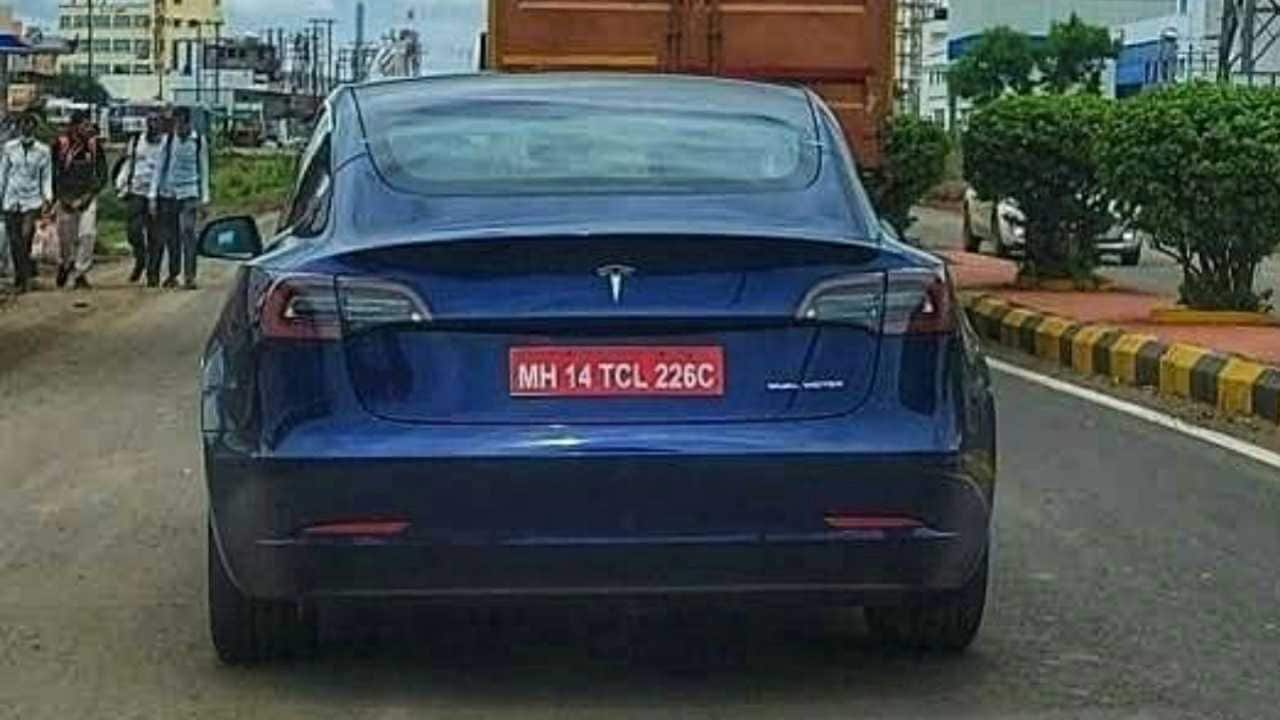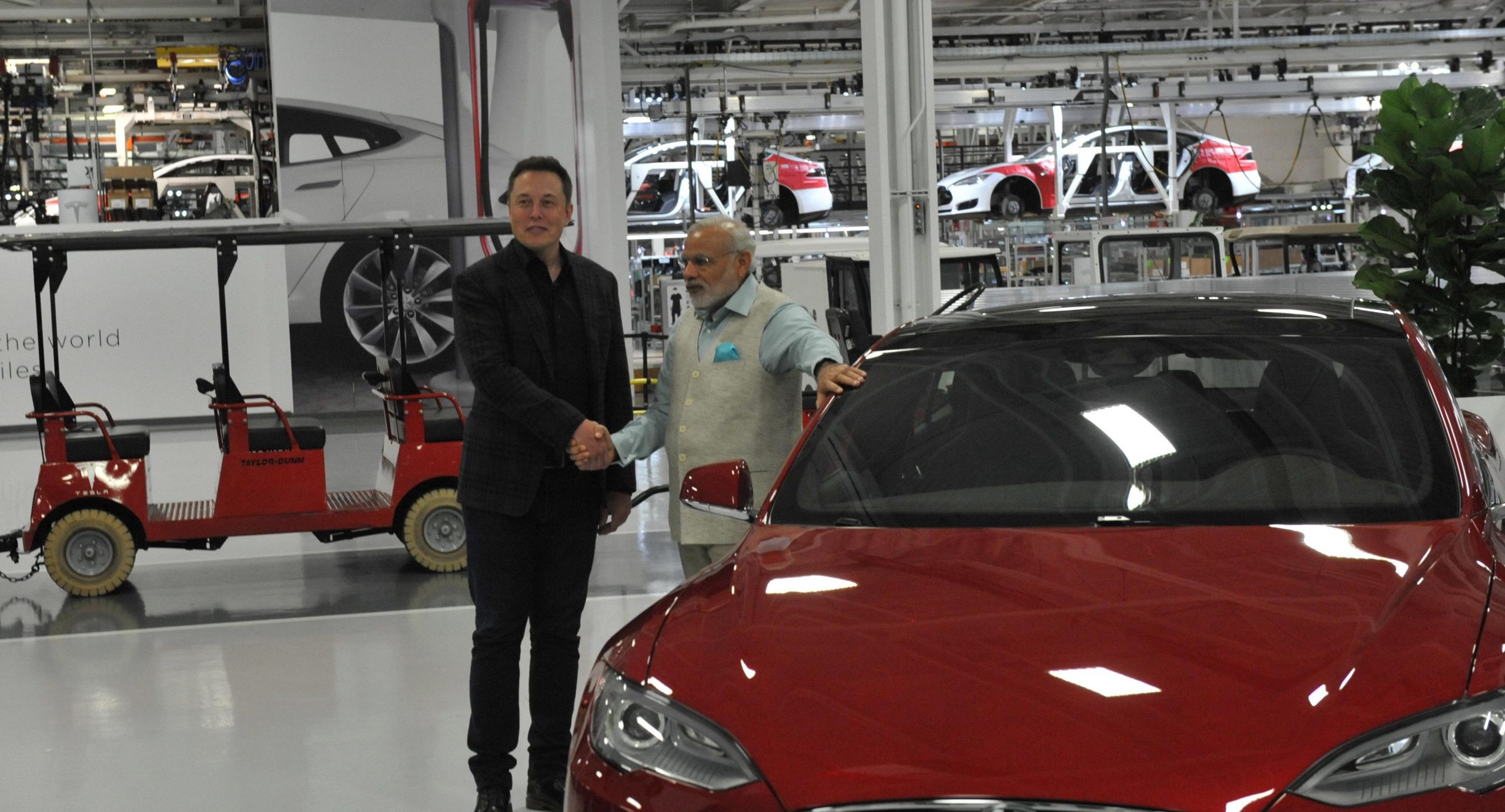

News
Tesla’s ‘challenges’ with India gov’t halt potential rescue of $27B manufacturing initiative
In 2014 when Narendra Modi officially became Prime Minister of India, his first message to people around the world was that, under his leadership, Indian manufacturing operations would become one of the world’s most robust. In September of the same year, Modi officially launched “Make In India,” a government initiative that encouraged companies from all corners of the globe to develop, produce, and assemble products in India with sizeable investments into manufacturing.
Five years after the initiative began, India’s manufacturing GDP was the lowest it had been in twenty years. It dropped 1.2% in the first five years following the launch of Make In India, although the growth rate of manufacturing globally increased 6.9% from 2014-15 to 2019-20.
Seven-and-a-half years later, Make In India is still a work in progress.
It was a disappointing start to the still active program, which has not been a complete failure. General Motors brought a $1 billion investment to a manufacturing facility in Maharashtra, the city where Tesla has been rumored to land with a potential factory of its own. Kia invested $1.1 billion in 2017 and has been producing vehicles at its factory in the Anantapur District since January 2019. Electrification, where the global automotive industry is heading, is still a weak point in India. Less than 1% of the country’s cars are electric.
Because of the extensive and massive $27 billion budget that has been set aside for these programs, India has tried to persuade companies to bring manufacturing to the country directly. With a sky-bound budget and thirst for local manufacturing, the confusion begins to set in: Why is Tesla, a company with a reputation for building the world’s best electric vehicles, that could likely build a manufacturing facility anywhere in the world, having so much trouble landing a deal in India to manufacture its vehicles?

A Tesla Model 3 testing in India (Credit: pune_exotics | Instagram)
The disconnect seems to be between Tesla’s requests and India’s needs. When Elon Musk, Tesla’s CEO, tweeted last night that there were still “challenges” when working with the Indian government, which had put the plans on hold once again, it seemed that the automaker’s requests for import duty reductions went to the wayside. An issue that seems to be Tesla’s most integral wish, import duty reduction has received support from some Indian politicians, noting that demand testing, which has been one key factor in the company’s attempts to enter India, cannot happen if duties are too high. “If they have to manufacture here, they need the numbers, and no one can test the market when you impose such high import duty on the vehicles,” Union Road Transport Minister Nitin Gadkari said in August.
If import taxation was not an issue, Tesla could use data already available to them to determine whether a Gigafactory would make sense in India. Spoiler alert: Tesla would never build a factory in India based on sales figures from the past ten years as very few people can afford them when import duties are involved. Any vehicle below $40,000 is subjected to 40% tax. Any vehicle more expensive than $40,000 receives a 100% tax, effectively doubling the price of the vehicle. Currently, Tesla has no vehicles in its lineup that are under the $40,000 price threshold.
The problem is those import duties are a huge issue. India seems to be against doing it, at least for now, even though the massive $27 billion budget would not be directly affected by an import tax rollback. In fact, that budget could still factor in tax losses from duty reductions. Perhaps the reasons linked to Tesla’s delayed entrance into India could be linked to the automaker’s lack of need for other companies due to its vertical integration. While this sounds far-fetched, the President of the Automotive Component Manufacturers Association (ACMA) said that localization is always a priority, and companies entering the market need to promote local manufacturing across the board, not just with the final product.
This would include everything from complex factors like semiconductors to other elements that are as simple as car seats. Tesla makes many of its parts in-house, including some microcontrollers and its automotive seats. “Tesla is absurdly vertically integrated compared to other auto companies or basically almost any company. We have a massive amount of internal manufacturing technology that we built ourselves,” Musk said in late 2020. “This makes it quite difficult to copy Tesla, which we’re not actually all that opposed to people copying us because you can’t do catalog engineering. You can’t just [say] I’ll pick up the supplier catalog, I’ll get one of those.”
This leaves India at a crossroads because, while Tesla would be a great benefit to the economy, manufacturing efforts, and employment, the company would not have as much to offer other sectors and companies as an automaker that is less vertically integrated. Reports have indicated that Tesla was planning to source components from local suppliers, but details regarding these rumors were slim.
India Prime Minister Narendra Modi visits the Tesla Fremont Factory in 2015.
But Tesla is far from a liability for any region. After launching Gigafactory Shanghai in China in early 2020, the factory has become Tesla’s biggest producer of EVs and accounted for nearly 52% of the automaker’s total deliveries for 2021. Despite the company’s vertical integration, which has increased gross margin on some Made-in-China Tesla vehicles to nearly 40%, the company has provided China with many economic benefits. The site will soon employ 9,000 people on the Model Y line alone after a confirmed expansion found in Tesla’s Environmental Impact Assessment for 2021. Gigafactory Shanghai will have 18,000 employees by the time the line expansion is completed. Additionally, it has helped encourage the adoption of EVs in Europe through exports, making the Model 3 the best-selling EV on the continent in 2021, with over 109,670 units sold. The next closest was the Renault Zoe, with 58,242 sales.
Whether Tesla will ever enter India seems to be a question that has no definitive answer currently. However, Tesla has been teasing a potential entrance for seven years, ever since Modi visited the Fremont factory in 2015. The long saga of Tesla and India will continue for now. With Tesla’s attractive status as an EV powerhouse, other countries might come knocking on the door, stealing an opportunity to increase India’s slumping reputation as a manufacturing hub. Considering the Made In India initiative’s backtrack in manufacturing GDP, perhaps new strategies should be tested.
I’d love to hear from you! If you have any comments, concerns, or questions, please email me at joey@teslarati.com. You can also reach me on Twitter @KlenderJoey, or if you have news tips, you can email us at tips@teslarati.com.

News
Tesla removes Safety Monitors, begins fully autonomous Robotaxi testing
This development, in terms of the Robotaxi program, is massive. Tesla has been working incredibly hard to expand its fleet of Robotaxi vehicles to accommodate the considerable demand it has experienced for the platform.

Tesla has started Robotaxi testing in Austin, Texas, without any vehicle occupants, the company’s CEO Elon Musk confirmed on Sunday. Two Tesla Model Y Robotaxi units were spotted in Austin traveling on public roads with nobody in the car.
The testing phase begins just a week after Musk confirmed that Tesla would be removing Safety Monitors from its vehicles “within the next three weeks.” Tesla has been working to initiate driverless rides by the end of the year since the Robotaxi fleet was launched back in June.
Two units were spotted, with the first being seen from the side and clearly showing no human beings inside the cabin of the Model Y Robotaxi:
A Tesla without a driver was spotted traveling on public roads! pic.twitter.com/ZLbduf4cKa
— TESLARATI (@Teslarati) December 14, 2025
Another unit, which is the same color but was confirmed as a different vehicle, was spotted just a few moments later:
NEWS: A second Tesla Model Y Robotaxi running FSD Unsupervised has just been spotted driving itself on public roads in Austin, Texas, with no one in the front seats.
This is a different car from the one spotted earlier. They have different license plates.
h/t @Mandablorian https://t.co/5URYsUGyD0 pic.twitter.com/CIUi4mXi33
— Sawyer Merritt (@SawyerMerritt) December 14, 2025
The two units are traveling in the general vicinity of the South Congress and Dawson neighborhoods of downtown Austin. These are located on the southside of the city.
This development, in terms of the Robotaxi program, is massive. Tesla has been working incredibly hard to expand its fleet of Robotaxi vehicles to accommodate the considerable demand it has experienced for the platform.
However, the main focus of the Robotaxi program since its launch in the Summer was to remove Safety Monitors and initiate completely driverless rides. This effort is close to becoming a reality, and the efforts of the company are coming to fruition.
Testing is underway with no occupants in the car
— Elon Musk (@elonmusk) December 14, 2025
It is a drastic step in the company’s trek for self-driving technology, as it plans to expand it to passenger vehicles in the coming years. Tesla owners have plenty of experience with the Full Self-Driving suite, which is not fully autonomous, but is consistently ranked among the best-performing platforms in the world.
News
Tesla refines Full Self-Driving, latest update impresses where it last came up short
We were able to go out and test it pretty extensively on Saturday, and the changes Tesla made from the previous version were incredibly impressive, especially considering it seemed to excel where it last came up short.

Tesla released Full Self-Driving v14.2.1.25 on Friday night to Early Access Program (EAP) members. It came as a surprise, as it was paired with the release of the Holiday Update.
We were able to go out and test it pretty extensively on Saturday, and the changes Tesla made from the previous version were incredibly impressive, especially considering it seemed to excel where it last came up short.
Tesla supplements Holiday Update by sneaking in new Full Self-Driving version
With Tesla Full Self-Driving v14.2.1, there were some serious regressions. Speed Profiles were overtinkered with, causing some modes to behave in a strange manner. Hurry Mode was the most evident, as it refused to go more than 10 MPH over the speed limit on freeways.
It would routinely hold up traffic at this speed, and flipping it into Mad Max mode was sort of over the top. Hurry is what I use most frequently, and it had become somewhat unusable with v14.2.1.
It seemed as if Speed Profiles should be more associated with both passing and lane-changing frequency. Capping speeds does not help as it can impede the flow of traffic. When FSD travels at the speed of other traffic, it is much more effective and less disruptive.
With v14.2.1.25, there were three noticeable changes that improved its performance significantly: Speed Profile refinements, lane change confidence, and Speed Limit recognition.
🚨 Many of you asked us to test highway driving with Tesla Full Self-Driving v14.2.1.25. Here’s what we noticed:
✅ Speed Profiles are significantly improved. Hurry Mode is no longer capped at 10 MPH over the speed limit, and now travels with the flow of traffic. This is much… pic.twitter.com/48ZCGbW0JO
— TESLARATI (@Teslarati) December 13, 2025
Speed Profile Refinement
Speed Profiles have been significantly improved. Hurry Mode is no longer capped at 10 MPH over the speed limit and now travels with the flow of traffic. This is much more comfortable during highway operation, and I was not required to intervene at any point.
With v14.2.1, I was sometimes assisting it with lane changes, and felt it was in the wrong place at the wrong time more frequently than ever before.
However, this was one of the best-performing FSD versions in recent memory, and I really did not have any complaints on the highway. Speed, maneuvering, lane switching, routing, and aggressiveness were all perfect.
Lane Changes
v14.2.1 had a tendency to be a little more timid when changing lanes, which was sort of frustrating at times. When the car decides to change lanes and turn on its signal, it needs to pull the trigger and change lanes.
It also changed lanes at extremely unnecessary times, which was a real frustration.
There were no issues today on v14.2.1.25; lane changes were super confident, executed at the correct time, and in the correct fashion. It made good decisions on when to get into the right lane when proceeding toward its exit.
It was one of the first times in a while that I did not feel as if I needed to nudge it to change lanes. I was very impressed.
Speed Limit Recognition
So, this is a complex issue. With v14.2.1, there were many times when it would see a Speed Limit sign that was not meant for the car (one catered for tractor trailers, for example) or even a route sign, and it would incorrectly adjust the speed. It did this on the highway several times, mistaking a Route 30 sign for a 30 MPH sign, then beginning to decelerate from 55 MPH to 30 MPH on the highway.
This required an intervention. I also had an issue leaving a drive-thru Christmas lights display, where the owners of the private property had a 15 MPH sign posted nearly every 200 yards for about a mile and a half.
The car identified it as a 55 MPH sign and sped up significantly. This caused an intervention, and I had to drive manually.
It seems like FSD v14.2.1.25 is now less reliant on the signage (maybe because it was incorrectly labeling it) and more reliant on map data or the behavior of nearby traffic.
A good example was on the highway today: despite the car reading that Route 30 sign and the Speed Limit sign on the center screen reading 30 MPH, the car did not decelerate. It continued at the same speed, but I’m not sure if that’s because of traffic or map data:
🚨 We listened to and read a lot of you who had a complaint of Tesla Full Self-Driving v14.2.1 incorrectly reading Speed Limit signs
This appears to be resolved in v14.2.1.25.
Here’s a breakdown: pic.twitter.com/TEP03xrMbt
— TESLARATI (@Teslarati) December 13, 2025
A Lone Complaint
Tesla has said future updates will include parking improvements, and I’m really anxious for them, because parking is not great. I’ve had some real issues with it over the past couple of months.
Today was no different:
🚨 My lone complaint with my drive on Tesla FSD v14.2.1.25 was this strange parking instance.
FSD swung out wide to the left to pull into this spot and this is where it seemed to be stumped. I gave it about 10 seconds after the car just stopped moving for it to make some… https://t.co/ZEkhTHOihG pic.twitter.com/TRemXu5DLf
— TESLARATI (@Teslarati) December 13, 2025
Full Self-Driving v14.2.1.25 is really a massive improvement over past versions, and it seems apparent that Tesla took its time with fixing the bugs, especially with highway operation on v14.2.1.
News
Tesla hints at Starlink integration with recent patent
“By employing polymer blends, some examples enable RF transmission from all the modules to satellites and other communication devices both inside and outside the vehicle.”

Tesla hinted at a potential Starlink internet terminal integration within its vehicles in a recent patent, which describes a vehicle roof assembly with integrated radio frequency (RF) transparency.
The patent, which is Pub. No U.S. 2025/0368267 describes a new vehicle roof that is made of RF-transparent polymer materials, allowing and “facilitating clear communication with external devices and satellites.”
Tesla believes that a new vehicle roof design, comprised of different materials than the standard metallic or glass elements used in cars today, would allow the company to integrate modern vehicular technologies, “particularly those requiring radio frequency transmission and reception.
Tesla has recently filed a US patent application on integrating RF transparent materials into the roof structure.
“facilitating clear communication with external devices and satellites”
Tesla fleet is getting @Starlink connectivity integration soon. LFG @Tesla @elonmusk… pic.twitter.com/bLa8YtPLd1
— Chansoo Byeon (@Chansoo) December 9, 2025
Instead of glass or metallic materials, Tesla says vehicles may benefit from high-strength polymer blends, such as Polycarbonate, Acrylonitrile Butadiene Styrene, or Acrylonitrile Styrene Acrylate.
These materials still provide ideal strength metrics for crashworthiness, stiffness for noise, vibration, and harshness control, and are compliant with head impact regulations.
They would also enable better performance with modern technologies, like internet terminals, which need an uninterrupted signal to satellites for maximum reception. Tesla writes in the patent:
“By employing polymer blends, some examples enable RF transmission from all the modules to satellites and other communication devices both inside and outside the vehicle.”

One of the challenges Tesla seems to be aware of with this type of roof design is the fact that it will still have to enable safety and keep that at the forefront of the design. As you can see in the illustration above, Tesla plans to use four layers to increase safety and rigidity, while also combating noise and vibration.
It notes in the patent that disclosed examples still meet the safety requirements outlined in the Federal Motor Vehicle Safety Standards (FMVSS).
Starlink integrated directly into Tesla vehicles would be a considerable advantage for owners. It would come with a handful of distinct advantages.
Initially, the inclusion of Starlink would completely eliminate cellular dead zones, something that is an issue, especially in rural areas. Starlink would provide connectivity in these remote regions and would ensure uninterrupted service during road trips and off-grid adventures.
It could also be a critical addition for Robotaxi, as it is crucial to have solid and reliable connectivity for remote monitoring and fleet management.
Starlink’s growing constellation, thanks to SpaceX’s routine and frequent launch schedule, will provide secure, stable, and reliable internet connectivity for Tesla vehicles.
Although many owners have already mounted Starlink Mini dishes under their glass roofs for a similar experience, it may be integrated directly into Teslas in the coming years, either as an upgrade or a standard feature.








